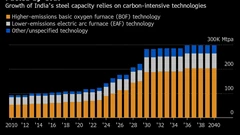Duke Energy collaborates with AWS to develop smart grid solutions
Duke Energy, one of America’s largest energy holding companies, and Amazon Web Services (AWS), an Amazon.com company, are entering into a multiyear strategic collaboration to accelerate the utility’s development of industry-leading grid solutions that will benefit customers and help advance Duke Energy’s clean energy transition.
As part of this agreement, Duke Energy will build new smart grid software and services on AWS and expand its Intelligent Grid Services – a suite of custom-built applications that help the utility anticipate future energy demand and identify where and how to update the power grid. AWS, in turn, will work alongside Duke Energy to build out cloud technologies to support Duke Energy’s grid-planning solutions, so they run faster and more cost effectively.
This collaboration will further Duke Energy’s commitment to use AWS as their primary cloud provider for software development. The utility is also migrating information technology (IT) and grid analytics workloads to AWS.
Duke Energy is executing an aggressive clean energy strategy to create a smarter energy future for its customers and communities. This includes investing $145 billion over the next decade in capital projects, the majority of which will go toward modernizing the nation’s largest electric grid. These investments will improve the grid’s reliability and resiliency, connect a growing number of renewables and prepare the grid for rapid electric vehicle adoption – all while keeping affordability for customers at the forefront.
“Our digital evolution is foundational to our clean energy transition,” says Bonnie Titone, senior vice president and chief information officer at Duke Energy. “For example, to accurately simulate future energy needs and plan investments for the grid, we need to run hundreds of millions of power flow calculations – a process that would take weeks using traditional IT hardware. By using cloud technologies that AWS is developing for Duke Energy, we aim to run those same simulations in 15 minutes or less.”
These simulations – and other analytics made possible by Duke Energy’s Intelligent Grid Services applications on AWS – deliver insights that will help the utility continue its data-driven grid investment plans. The industry-leading applications can forecast where needs will be greatest and estimate the amount of load the distribution system can accommodate without impacting power quality or reliability. These applications can also make recommendations on the most cost-effective grid solutions needed to meet the evolving needs of customers, whether that customer is an individual who wants to put solar panels on their home or a commercial customer that wants to electrify its fleet of vehicles.
And by running the applications on AWS, Duke Energy is able to get these actionable insights from millions of gigabytes of data at unprecedented scale and speed. Faster, more accurate insights mean Duke Energy is better equipped to build the grid of the future – a smart grid that can withstand extreme weather, handle the growing needs of electric vehicles, and support green technologies, such as rooftop solar and battery energy storage.
“Duke Energy and AWS share similar commitments to a smarter and cleaner energy future with net-zero carbon emissions,” said Sarah Cooper, general manager of AWS Industry Products. “These Intelligent Grid Services leverage the proven scalability and reliability of the world’s leading cloud and will help Duke Energy meet energy demands while maximizing the use of clean energy sources, such as solar and wind power, to serve their customers.”
“Customers are at the center of everything Duke Energy does,” said Harry Sideris, executive vice president of customer experience, solutions and services at Duke Energy. “Through this partnership with AWS, we’ll be able to make better decisions at the micro and macro levels to meet the evolving needs of our customers and communities as we build a smarter, cleaner energy future together.”
KEEPING THE ENERGY INDUSTRY CONNECTED
Subscribe to our newsletter and get the best of Energy Connects directly to your inbox each week.
By subscribing, you agree to the processing of your personal data by dmg events as described in the Privacy Policy.
More renewables news

WEC Energy Offered $2.5 Billion US Loan for Renewable Projects

With Trump Looming, Biden’s Green Bank Moves to Close Billions in Deals

GE Vernova Expects More Trouble for Struggling Offshore Wind Industry

Climate Tech Funds See Cash Pile Rise to $86 Billion as Investing Slows

GE Vernova to Power City-Sized Data Centers With Gas as AI Demand Soars

Longi Delays Solar Module Plant in China as Sector Struggles

Australia Picks BP, Neoen Projects in Biggest Renewables Tender

SSE Plans £22 Billion Investment to Bolster Scotland’s Grid

A Booming and Coal-Heavy Steel Sector Risks India’s Green Goals
















